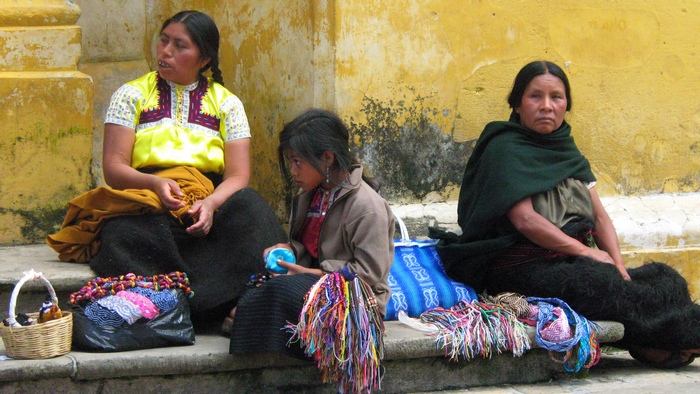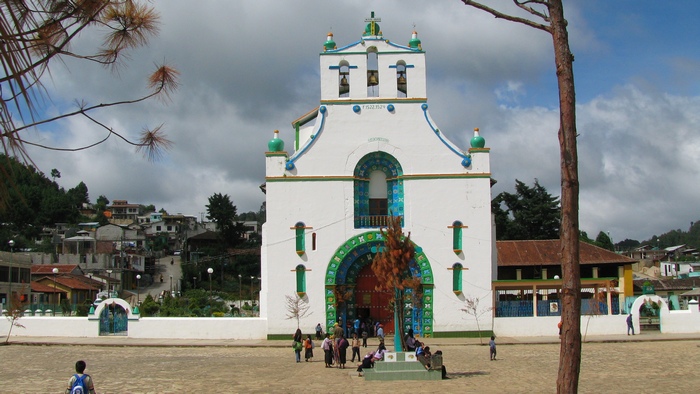Wandering through Central America
When you're living in San Francisco, it's hard to argue that Central America is "on the way" to Eastern Europe. However, that's what I told my worried mom anyway. Central America is indeed east of San Francisco, so there was some logic to my point.
Before going to Eastern Europe, I wanted to see four Central America nations I had missed in my previous trips. Instead of seeing just those four, I figured I would see all eight of them, except El Salvador. I'd been to El Salvador twice and didn't feel like returning, especially when you consider that every day 10 people there are murdered. It has the highest per capita murder rate in the world. Also it has so many earthquakes that the stubborn citizens of San Salvador have had to rebuild their city nine times.
So instead I went to Chiapas. It's the poorest part of Mexico famous for rebelling against its government, brandishing weapons, and causing general pandemonium. Sounds much better than El Salvador.
The bumbling beginning
The trip started well. Mexicana Airlines was out of seats in Coach, so they moved me to First Class. However, things immediately went south after that. Upon arriving in Oaxaca I realized that I forgot to bring an ATM card and a guidebook. So much for being a "seasoned traveler."
I wasn't too worried about money since I had US dollars and a credit card that should help me get a cash advance. However, Oaxaca's airport is surprisingly puny. It had neither an ATM nor a bank. It doesn't even have a currency exchange, so I was stuck with my gringo dollars. And without a guidebook I had no idea where to go. No money, no guidebook, no clue. This was certainly not a promising start for my multi-month journey.
I spotted a robust man with long blond hair and a surf board trying to rent a car at the airport - I'd advise you to book your car in advance, you may do it here. I hoped this traveler would take pity on my situation and let me hitch a ride to wherever he was going. Since I had no clue where to go, his destination would probably be as good as any.
Unfortunately, this surfer didn't have a plan on where to go either. He had no lodging reserved and hadn't decided if he would drive to the beach today or tomorrow. His name was Alex Riavitz, and he was 30 year old Austrian business auditor obsessed with surfing. I felt sorry for Alex. Sure he had a handsome chiseled face and blue eyes, but the poor guy was stuck in Austria: a place with cold weather and no nearby ocean. Austria may be a heaven for mountain climbers, but it is hell for surfers.
Alex graciously agreed to let me hitch a ride. He formulated his plan as he drove: he would find a hostel in Oaxaca and said I could join him. With no idea where the hell I was, I cheerfully supported the proposal.
Oaxaca: the confusing, but charming, colonial town
Take a peek at this map of Oaxaca, so you can understand what I'm talking about.
Finding a hostel in Oaxaca proved difficult partly because those who named the streets were morons. At first glance Oaxaca's layout seems easy: it's a grid. However, upon closer examination you'll learn that the streets often change their name in just a few blocks, even though the street keeps going straight. You're on Trujano one moment and then suddenly, for no apparent reason, you're on Guerrero. I would tell Alex to turn right on Melchor Campo, but we'd completely miss it because we happened to cross Melchor Campo at the point where it is called Avenida Juarez. Of course, neither of us knew this so we contributed a extra ton of carbon dioxide to the atmosphere as we drove around in circles.
We eventually found three hostels, but they were all full so I recommend you booking your accommodation in advance. We persisted and the fourth hostel had a room which Alex and I shared with a man from the Netherlands with a potent name: Magnus. The three of us explored the charming colonial town, which is filled with impressive cathedrals, music, and street vendors. We had dinner at an authentic Mexican restaurant that had several tourists. Why is it impossible to be authentic and touristy?
If you've never been to Oaxaca, visit this charming little town that makes for a good launchpad for other adventures.
Puerto Escondido: a semi-hidden surfer's paradise
I joined Alex on his drive south to Puerto Escondido via the endless curvy mountain roads. At the Pacific Ocean Alex found what he was looking for: big waves. He's a real surf nut: he brought three surf boards with him! He discouraged me from surfing. I didn't see why I shouldn't, but I'm glad I took his advice. While I caught up on my email under a palm tree, sipping a tropical fruity drink, furious waves were pounding Alex into submission. When he met up with me afterwards, he seemed a bit wobbly, as if he had a few too many drinks or had just gotten the crap beaten out of him.
There's not that much to do in Puerto Escondido except surf, relax, and drink margaritas. If that's what you want, this inexpensive town on the Pacific Ocean is your place! Check out some of the most popular activities in this city:
→ Bioluminescent Lagoon Boat Ride and Swim from Puerto Escondido
→ Surf Classes in Puerto Escondido
San Cristobal De La Casas: the cultural epicenter of Chiapas
I took an overnight bus to San Cristobal de las Casas, a city founded in 1528. At 2,100 meters (higher than Denver), it's the capital of Chiapas, a mountainous region in Mexico. Unlike Puerto Escondido, it's a tad chilly here, especially at night. The modern-day Mayans call this their home.
→ Sumidero Canyon, Chiapa de Corzo Magical Town from San Cristóbal de las Casas
→ La Venta River Canyon and Aguacero Waterfall Visit from San Cristobal
→ Montebello Lakes and Waterfalls Tour from San Cristobal
Before I left, I visited San Juan Chamula. It's a conservative pueblo where you can meet authentic, indigenous Mexicans. Although they speak Spanish, they prefer to speak Tzotzil. Instead of saying hola, say k'usi aw otan. Instead of saying adiós (bye), say licalto. In their main square they had a busy, colorful market. They also practice polygamy. Unfortunately, I couldn't even find one wife there.
Oscar Wilde would have said that's a good thing. As he put it, "Bigamy is having one wife too many. Monogamy is the same."
Next stop: Guatemala! I wasn't sure how to get there. Little did I know that I would end up sneaking across the Mexican-Guatemalan border in the middle of the night evading the authorities on either side. I'll recount that adventure in my next email!
A quick rant about the US election
The Electoral College sucks. It made a lot of sense 200 years ago when there was no such thing as radio, TV, or the Internet. Back then, the Founders were worried that the candidates would only go to big cities to get the popular vote and ignore places like Montana, North Dakota, and Missouri. Now, thanks to the Electoral College, those are the only states the candidates care about! Why visit New York, California, or Texas when those states are in the bag?
Modern mass media lets a farmer in Missouri see the politician blowing hot air in Manhattan, and the Manhattan voter can see the politician shoveling manure in Missouri. Both voters can post questions on YouTube, participate in phone-a-thons, call into Larry King Live, and watch the debates while eating popcorn. Unlike 200 years ago, we all have access to the same information.
The worst part about the Electoral College system is that it's not a true democracy. Three times we've had a President win the popular vote, yet lose the election. How democratic is that?
Solution: Tell your Congressional representative that you want Presidential elections decided on the popular vote. In the meantime, make your state a battleground state by telling pollsters than you'll vote for the underdog. Even better, on Election Day, vote for the Presidential underdog in your state. In Texas, that means vote for Obama or a third party candidate. In California, vote for McCain or a third party candidate. You'll help make your state's race a little closer and maybe next time candidates will pay attention to your state. And everyone always loves a tight race!
Although I'm half-joking, it's important to vote. Otherwise, the Constitution says that you're not allowed to complain for the next four years.




